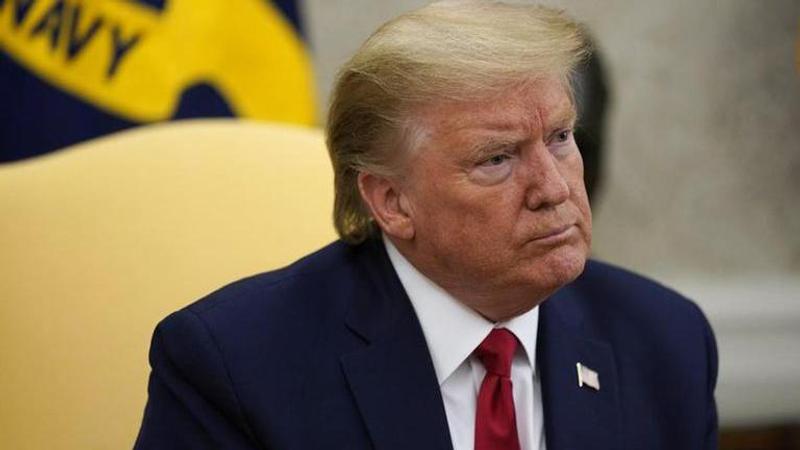Published 23:38 IST, October 3rd 2020
Trump's diagnosis shows US vulnerability to the coronavirus
President Donald Trump’s startling COVID-19 diagnosis serves as a cruel reminder of the pervasive spread of the coronavirus and shows how tenuous of a grip the nation has on the crisis, health experts said.

President Donald Trump’s startling COVID-19 diagnosis serves as a cruel reminder of the pervasive spread of the coronavirus and shows how tenuous of a grip the nation has on the crisis, health experts said.
With U.S. infections rising for several weeks, Trump was one of about 40,000 Americans who learned they had tested positive when he broke the news early Friday. First lady Melania Trump also tested positive, and both were described as having mild symptoms. The president went to a military hospital for what the White House said was a precautionary visit of “a few days.” Some of his top advisers and allies also have tested positive recently.
“No one is entirely out of the virus’s reach, even those supposedly inside a protective bubble," said Josh Michaud, associate director of global health policy with the Kaiser Family Foundation in Washington.
Eight months after the virus first reached the United States, worrying signals mounted of what's ahead this fall. The NFL postponed its first game because of a worsening outbreak among the Tennessee Titans. Some hospitals in Wisconsin have run low on space, and experts warned of a likely surge in infections during the colder months ahead. Some economists say it could take as long as late 2023 for the job market to fully recover.
The U.S. leads the world in numbers of confirmed infections, with more than 7 million, and deaths, with more than 208,000. Only a handful of countries rank higher in COVID-19 deaths per capita.
“The statistics are so mindboggling, they make us numb to the reality of just how painful, unacceptable and absurd this is,” said Dr. Reed Tuckson, board chairman of the nonpartisan Health Policy Alliance in Washington. “Every single American must double down on their vigilance. If we don’t, then we are being foolhardy and irresponsible.”
The president’s infection occurred as the nation has reached a crossroads in its response to the virus.
The U.S. is averaging 40,000 cases a day. The situation is improving in Sun Belt states that were hot spots in the summer — months after states reopened in May and gatherings during the Memorial Day and July Fourth holidays fueled a surge in infections, hospitalizations and deaths.
Many of those states took action this week to loosen restrictions. Mississippi’s governor ended a mask requirement, South Carolina’s governor said he would ease capacity restrictions on restaurants and New Orleans bars were given the greenlight to sell carry-out drinks. Florida has moved ahead with an aggressive reopening that gives bars and restaurants latitude to allow as many customers as they choose.
The outlook is gloomier in the Midwest.
Wisconsin reported a record daily death toll Wednesday, and hospitals in multiple cities said they were running out of space. A 530-bed field hospital that the U.S. Army Corps of Engineers built on the state fairgrounds in the city of West Allis in April could be put to use if the situation worsens.
Iowa reported more than 1,000 new cases for the third consecutive day Friday as the virus continued to aggressively spread in many regions of the state. South Dakota health officials reported record highs in deaths and cases Thursday.
Dr. William Schaffner, an infectious diseases expert at Vanderbilt University, said Trump’s diagnosis “reinforces the notion we need a national policy and we need everyone to participate in the basic preventions."
Instead, Schaffner said, the response “has been subcontracted to the governors, which has left us with a crazy quilt of approaches.”
For months, Trump has downplayed the virus, rarely wearing a mask, holding large campaign rallies and urging businesses and schools to reopen. Masks have not been mandatory for White House staff, despite evidence they help to stop the spread.
“Now, tragically, this experiment has shown, at the highest office of the country, it ain’t working. It didn’t work," Schaffner said.
Michaud said the nation is experiencing “a dangerous moment.”
“We have lots of schools, universities, workplaces and other businesses and institutions reopening. Colder weather is also on the way, which will likely increase the chances people will congregate together indoors,” Michaud said.
If complacency sets in, infections will rise.
“We’re still not doing sufficient testing and contact tracing across the country,” Michaud said. “For all these reasons, we’re likely to more transmission in the U.S., not less, in the coming weeks and months.”
(This story has not been edited by www.republicworld.com and is auto-generated from a syndicated feed)
Updated 23:38 IST, October 3rd 2020




